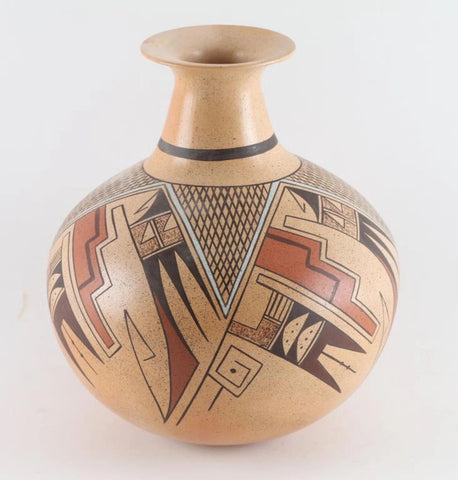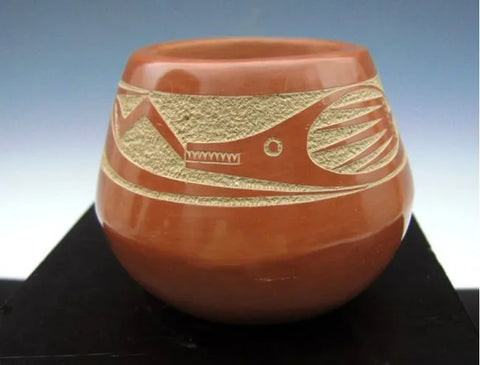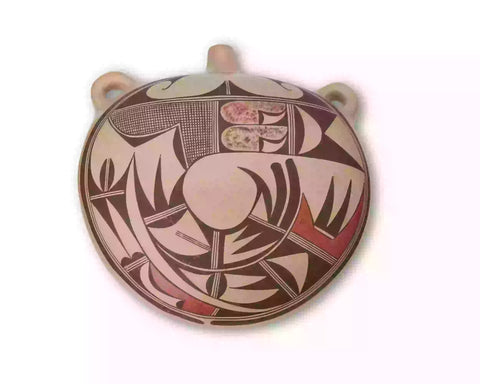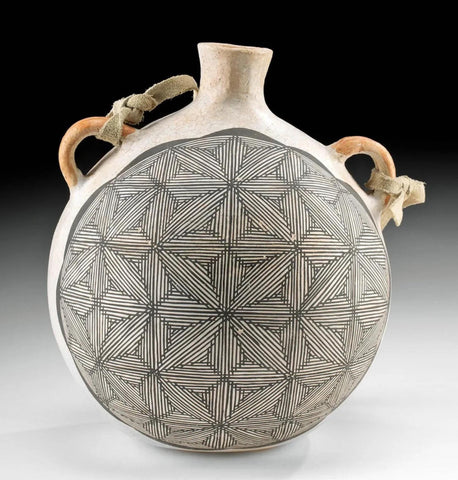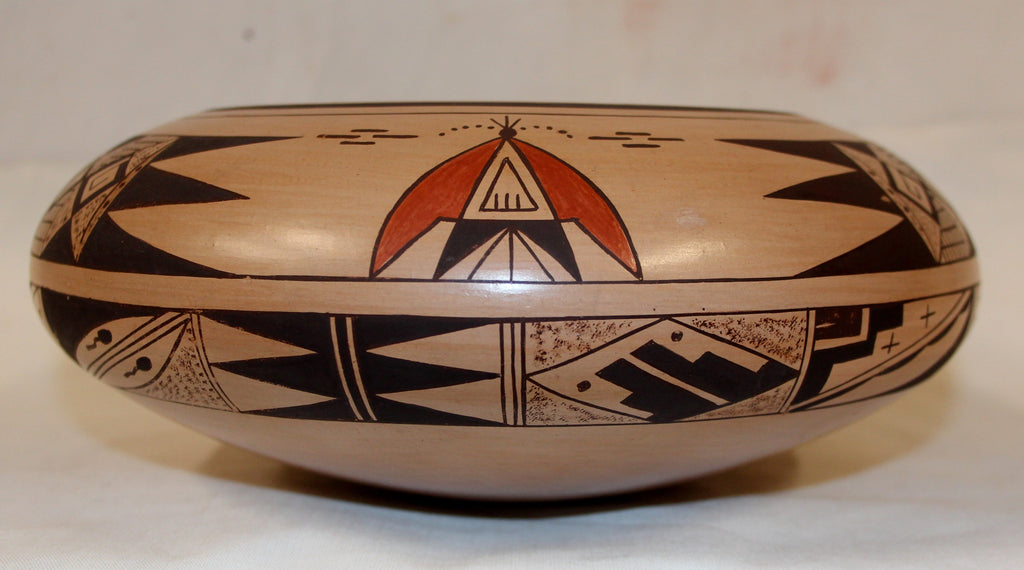
Native American, Hopi Poly Chrome Pottery Bowl, ca 1970's, #1023 Sold
$ 975.00
1023. Description: Native American Hopi Poly Chrome Pottery Bowl, ca 1970's
Dimensions: 4” x 9.5”
Condition: Excellent for Age
Provenance: From the Patrick J. Eddington Estate: Patrick Eddington is a former CIA imagery analyst, a former lobbyist, private researcher, author, and Congressional staffer. Eddington resigned in 1996 after working on a book (Gassed in the Gulf) that exposed the gulf war syndrome. His CIA memoir, Long Strange Journey, was published in 2011. In a 2011 interview with the Washington Post, Eddington accused the CIA of still withholding 1.5 million documents relevant to the Desert Storm malady known as gulf war syndrome.[1]
During his tenure at the CIA, his analytical assignments included monitoring the breakup of the former Soviet Union; providing military assessments to policy makers on Iraqi and Iranian conventional forces and coordinating the CIA's military targeting support to NATO during Operation Deliberate Force in Bosnia in 1995.
Eddington's opinion pieces have appeared in a number of publications, including the Washington Post, Los Angeles Times, Washington Times, Fort Worth Star-Telegram, and the Army Times, among others. Eddington is a frequent commentator on national security issues for the Fox News Channel, MSNBC, SKY News, CNN, and other domestic and international television networks
References
1. http://voices.washingtonpost.com/spy-talk/2011/02/ex-cia_analyst_patrcik_eddingt.html
A History of Pueblo Pottery:
Pueblo pottery is made using a coiled technique that came into northern Arizona and New Mexico from the south, some 1500 years ago. In the four-corners region of the US, nineteen pueblos and villages have historically produced pottery. Although each of these pueblos use similar traditional methods of coiling, shaping, finishing and firing, the pottery from each is distinctive. Various clay's gathered from each pueblo's local sources produce pottery colors that range from buff to earthy yellows, oranges, and reds, as well as black. Fired pots are sometimes left plain and other times decorated most frequently with paint and occasionally with applique. Painted designs vary from pueblo to pueblo, yet share an ancient iconography based on abstract representations of clouds, rain, feathers, birds, plants, animals and other natural world features.
Tempering materials and paints, also from natural sources, contribute further to the distinctiveness of each pueblo's pottery. Some paints are derived from plants, others from minerals. Before firing, potters in some pueblos apply a light colored slip to their pottery, which creates a bright background for painted designs or simply a lighter color plain ware vessel. Designs are painted on before firing, traditionally with a brush fashioned from yucca fiber.
Different combinations of paint color, clay color, and slips are characteristic of different pueblos. Among them are black on cream, black on buff, black on red, dark brown and dark red on white (as found in Zuni pottery), matte red on red, and poly chrome a number of natural colors on one vessel (most typically associated with Hopi). Pueblo potters also produce un-decorated polished black ware, black on black ware, and carved red and carved black wares.
Making pueblo pottery is a time-consuming effort that includes gathering and preparing the clay, building and shaping the coiled pot, gathering plants to make the colored dyes, constructing yucca brushes, and, often, making a clay slip. While some Pueblo artists fire in kilns, most still fire in the traditional way in an outside fire pit, covering their vessels with large potsherds and dried sheep dung. Pottery is left to bake for many hours, producing a high-fired result.
Today, Pueblo potters continue to honor this centuries-old tradition of hand-coiled pottery production, yet value the need for contemporary artistic expression as well. They continue to improve their style, methods and designs, often combining traditional and contemporary techniques to create striking new works of art. (Source: Museum of Northern Arizona)
----------------
View the other items in my shop: http://www.etsy.com/shop/CulturalPatina?ref=shopsection_shophome_leftnav










